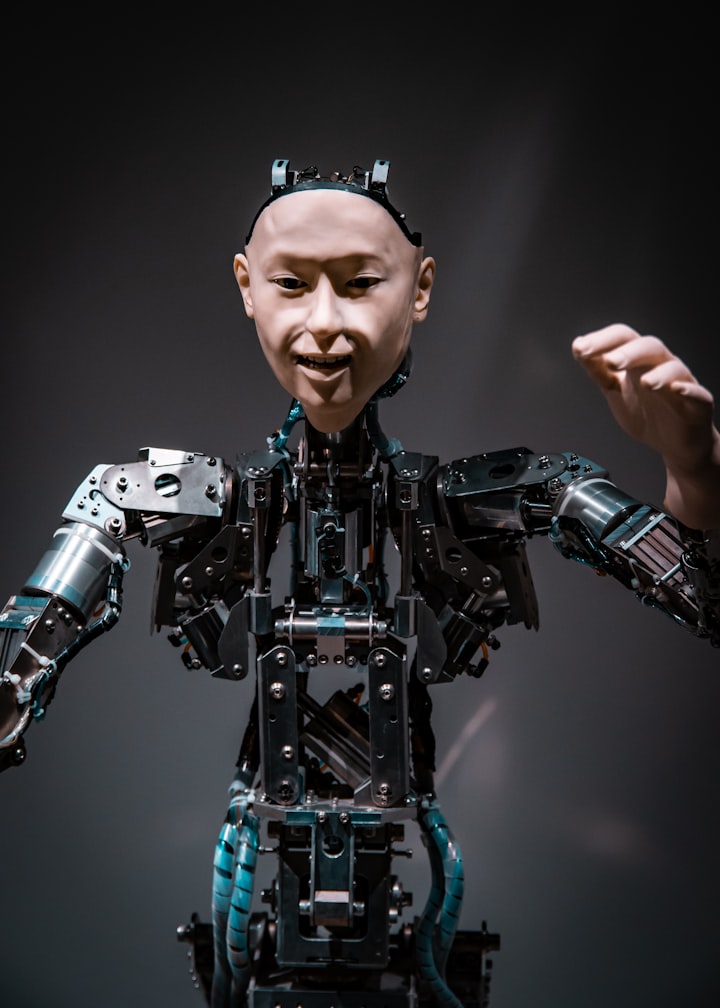10 Risks of Artificial Intelligence to Know
What happens if AI moves without proper supervision and control?

Everyone remembers the movie Terminator, about humanity's struggle against robots controlled by artificial intelligence? The storyline shows the risk of artificial intelligence that is too sophisticated to endanger human existence itself.
The risk of artificial intelligence or AI was conveyed by Elon Musk in 2018. The founder of Tesla and SpaceX said he feared future AI development.
"[AI] scares me. AI is capable of doing more things than almost anyone knows, and the increase is exponential." - Elon Musk at the SXSW technology conference.
Elon Musk's concerns about the risks of artificial intelligence are reasonable because AI is currently so sophisticated. One of them is automating specific jobs based on algorithmic patterns, potentially creating massive disruption.
So, what are the risks of artificial intelligence and the dangers it might pose in the future? Let's dive in.
Risk of social privacy violation
Almost every individual today is connected to each other online through various channels. Whether through social media, websites, or having accounts on specific sites with a broad scope of friends.
Some parties utilize this, whether companies or governments, to collect information using specific algorithms driven by AI. Be it for marketing or surveillance purposes.

One example is the Chinese government that uses facial recognition technology in public places such as public spaces, offices, schools, etc. This allows them to monitor the activities of their citizens, collect data, and track their position.
Government surveillance of individuals can potentially increase the risk of violating people's privacy in the social sphere. Ultimately, it may remove individuals' freedom to express opinions or determine their political views.
Job loss due to AI automation
AI disruption severely impacts specific fields of work because it replaces human labor. Where manual processes will slowly disappear because they have been automated by AI with the aim of efficiency.
According to the Word Economic Forum, an estimated 85 million jobs will be lost due to AI automation between 2020 and 2025. This is a massive challenge for workers in vulnerable sectors.

Increasingly intelligent AI technology will replace specific jobs that previously used manual and repetitive processes. However, the existence of AI is also considered promising because it can open up new jobs.
However, the problem is when employees need more technical expertise to collaborate with AI as a condition of the new job. This can lead to increased unemployment due to a need for more qualified personnel based on specific standards.
Causing bias
Princeton University computer science professor Olga Russakovsky has said that overly intelligent AI has the potential to cause bias and transcend gender and race issues. A challenge that is still a complicated issue today.
According to Russakovsky, most AI creators and scientists behind them are men of a specific racial group with high socioeconomic stability. As a homogenous group, they are also generally ordinary people with no disabilities.

Other high-risk forms of AI bias include gender-discriminatory hiring practices and racialized healthcare treatment. This is why the creation of AI by developers and on an enterprise scale must be done carefully with strict regulations.
The goal is not only to minimize bias as much as possible and avoid prejudice from putting minorities at risk but also to eliminate the barriers of discrimination and racism that are still a problem in some countries.
Causing socioeconomic disparities
The risks of artificial intelligence, such as bias, cannot be underestimated as the effects are tremendous. One form of this is the socioeconomic inequality that occurs due to the loss of specific jobs due to technological disruption.
In the work context, a clear example of such inequality is a wage decrease of up to 70 percent for blue-collar workers. The cause is AI automation that replaces manual work processes that are usually done repetitively.

Inevitably, those whose professions are vulnerable to disruption must be able to adapt quickly. The adaptation process becomes challenging at this point because it is not easy and takes time to adjust.
Socioeconomic disparities disrupt specific communities and risk harming human values that uphold equality. This includes widening the gap between the rich and the poor.
Lowering ethics and integrity
Pope Francis, in a 2019 meeting at the Vatican entitled "The Common Good in the Digital Age," warned about the extraordinary ability of artificial intelligence to "circulate tendentious opinions and false data."
The Pope also emphasized that there would be far-reaching consequences of allowing this technology to develop without proper supervision or control. Humans will be in danger of moral decline and risk threatening their integrity.

The development of ChatGPT as a trending AI model is one of the many forms of artificial intelligence being highlighted. Its ability to write, for example, is feared to pose a risk to academic integrity and weaken the creativity of human thinking.
Although many out there may argue that ChatGPT is considered under the corridor with the frills "without harming the integrity of users itself," this risk still lurks in the future. No one can guarantee it except the mentality of the users themselves.
AI-controlled autonomous weapons
Skynet in the Terminator movie is a picture as well as a warning if artificial intelligence is too sophisticated, it will threaten the existence of humans as its creators. Especially if it is developed massively for future military needs under the pretext of security.
The open letter initiated in 2016 is clear evidence of how worried people are if AI turns out to be uncontrollable. Especially when the program is developed as a deadly military weapon with autonomous control.

"If any major military power drives the development of AI weapons, a global arms race is almost inevitable, and the end point of this technological trajectory is clear: autonomous weapons will become the Kalashnikov of the future," they wrote an open letter.
Civil society's concerns are well-founded, as autonomous weapons have now been realized in various prototypes that are ready to be developed at any time. One is the Deadly Autonomous Weapon System, which can automatically eliminate targets.
Triggering crisis in the financial sector and capital markets
Another risk of artificial intelligence is the occurrence of financial failures in the capital market caused by AI algorithms. Moreover, the financial industry is a field that is relatively quick to adapt and involves AI in its daily work processes.
AI algorithms can make thousands of trades in seconds to sell quickly for a profit. This kind of thing certainly significantly affects the psychology of investors worried that the market will crash and even experience extreme volatility.

The 2010 Flash Crash may be an essential lesson, where investigations concluded that the crash was caused by high-frequency trading. Where large amounts of securities were aggressively sold and bought.
A London-based trader named Navinder Singh was arrested in 2015 for market manipulation that led to the Flash Crash. The charges revealed a Sarao trading algorithm that executed several orders for E-Mini S&P contracts to depress their price.
The threat of deepfake and the risk of social manipulation
Misguided propaganda leading to the spread of hoaxes is the effect of deep fakes that run using AI. Its existence warns media and online news to be more cautious, especially if it has entered the social and political realm.
Deepfake are particularly dangerous because the technology can mimic the faces and voices of public figures with almost no difference. Therefore, it is feared that Deepfake will become a way for criminals to spread fake news and manipulate reality.

Another example is Filipino politician Ferdinand Marcos Jr. who used algorithm-based user interactions from social media managed by an organized army of trolls to win votes from young people in his country in the 2022 campaign.
The phenomenon of deepfake utilizing AI algorithms from social media is the answer to a 2018 report on the potential misuse of AI, which listed social manipulation as one of the main dangers arising from the power of artificial intelligence technology.
Cybercrime using AI
The most dangerous risk of artificial intelligence is that it is used as a cyber weapon to commit online crimes. If AI can be designed to write specific code, it is not impossible to be used to distribute dangerous malware and ransomware.
A study conducted by European police agency Europol and security provider Trend Micro in 2020 identified how cybercriminals are utilizing AI to carry out their crimes.

AI's characteristic of being able to move quickly on a large scale is one of the advantages that is then exploited to spread more sophisticated threats. Some are reported to be able to break CAPTCHA, guess passwords, and more.
The risk of cybercrime will always lurk, and the number is expected to become more massive. Moreover, cybercriminals using AI are constantly looking for more sophisticated attack methods and trying to exploit the weaknesses of a system.
Causing dependence on technology
The convenience offered by AI through devices such as smartphones, laptops, and similar tools makes humans gradually abandon traditional things - although not all of them, such as writing by hand, looking at physical maps, counting, remembering phone numbers, and others.
Computers and other digital devices with artificial intelligence can do the work to make things easier for humans. Ultimately, the culmination of such technology is to disrupt manual labor systems with automation processes.

Technology such as artificial intelligence can provide many new things to humans. But leaving everything to AI is not a wise choice because the essence of humans is still needed at any time.
Essential aspects of our lives, such as empathy, love, warmth, tolerance, friendship etc., are still needed. If technology takes over these things, we are already in the dependency stage.
Conclusion
AI is indeed one method that makes it easier for humans to complete work efficiently and measurably. However, it requires a balance between technological innovation with policies and human support as the person in charge.
It takes commitment from developers who create AI with strict regulations and controls from the government. Each has an essential role in ensuring artificial intelligence provides widespread benefits without bias and makes it a hope for the next generation.
This includes discussing the risks posed by AI and mitigating them quickly so that this phenomenal technology can be used wisely for noble purposes in the future.
About the Creator
Prio Danny Kuncoro
A writer who covers digital business and technology developments. Realizes that technological disruption, such as artificial intelligence, will shape the future.






Comments
There are no comments for this story
Be the first to respond and start the conversation.